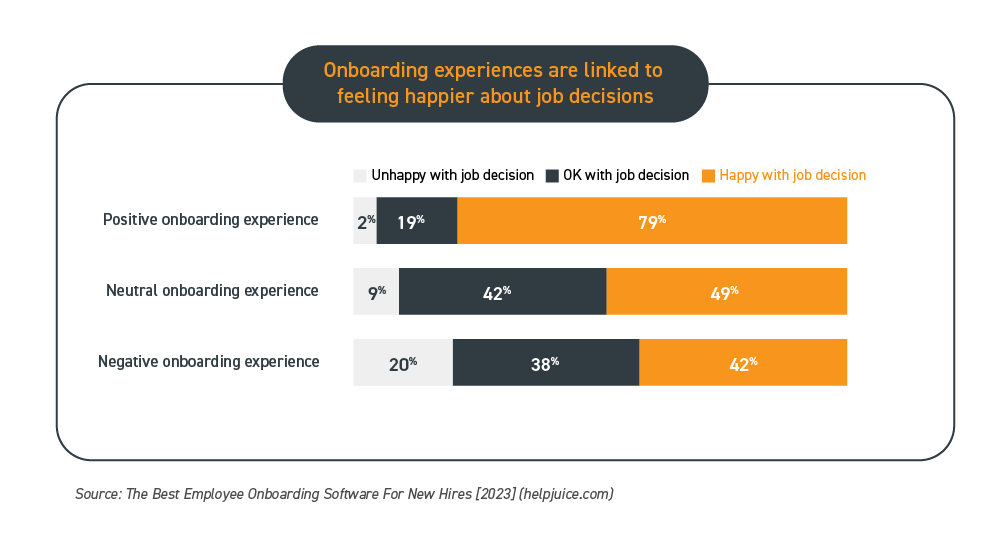Businesses choose to outsource for different reasons. For many the financial benefits simply cannot be ignored, with destinations such as the Philippines allowing them to save up to 70% on labour and operating costs. Others are won over by the ability to increase efficiencies by handing repetitive and time-consuming tasks to offshore staff, thus allowing in-house teams to focus on more productive and rewarding work.
Then there are those that want to quickly and seamlessly scale their operations – no benefits to be paid out when letting people go; no expensive office or IT equipment to be purchased when bringing them on.

What all businesses that outsource have in common though is there comes a point when they need to onboard their offshore staff and it has never been more important to get the process right. Global talent shortages reached a 16-year high last year, with 75% of employers reporting challenges finding skilled and qualified people to fill vacancies1. The battle for talent has rarely been tougher and businesses cannot afford to lose quality staff, let alone when they have only just walked through the door.
And make no mistake – a poor onboarding experience can have dire ramifications. We've all heard the saying 'First impressions count' and that is never more so than when starting a new job. Studies have found that people who have a negative onboarding experience are twice as likely to resign2, while the first 45 days of employment account for up to 20% of staff turnover3.

Now consider what happens when businesses shine from day one. Employees who engage in a structured onboarding program are 69% more likely to stay with an organisation for three years4. Retention rates for businesses that provide formal onboarding are estimated to be 50%5. Almost 80% of employees who participate in a formal onboarding process are able to meet their first performance goals6.
The way businesses onboard offshore staff is crucial to unlocking the full potential of outsourcing. Whether you are new to the outsourcing world or keen to improve existing programs, the following tips and hints will allow your organisation to shine from day one, enhance the skills of your recruits and help ensure they are part of the team for many days to come.
Key steps in the onboarding process
- Create a training plan – once a business has made the decision to outsource, it is understandable they want things to move quickly. This includes the training process – after all, the longer their new team members are being trained, the less time they are spending on actual tasks. The good news is that with a proper plan in place, there is no reason an outsourced employee needs to be trained any longer than an in-house colleague.
Offshore talent pools are typically filled with people keen to deliver for their new employers. For example, Filipinos have a reputation for highly valuing their jobs and it is essential to nurture that enthusiasm from day one. Having a training plan in place ensures they feel immediately welcome, as opposed to a sense of isolation from having nothing to do. Something as simple as a spreadsheet can outline what their training will look like, with dot points such as the training topic, descriptions or links to required material, how the training will be delivered and deadlines for completion.
- Establish Key Results Areas (KRAs) – clear and concise communication is one of the keys to a quality outsourcing partnership, which is why Key Results Areas are so beneficial. Also known as KRAs, they are the quantitative or qualitative results required for the tasks and responsibilities in a newcomers' job description. Whether it is processing 40 quotations per day or issuing a set number of invoices, it is all about ensuring staff know exactly what is expected of them.
While you or your managers may work closely with in-house staff and be able to physically monitor their performance, managing offshore employees is an entirely different beast. This is where KRAs come into play as they make it abundantly clear what is required of a team member in their roles at all times. During the onboarding process, take the time to establish KRAs and open a dialogue with your new team member about what is expected in terms of productivity for a given timeframe. Once they are set up, it is also essential to conduct regular check-ins to provide feedback and address any concerns.

-
Share business culture – in the rush to onboard offshore staff, it is often easy to forget there is another group impacted by outsourcing – your in-house employees. While most may be more than comfortable with the concept, there will likely be some team members nervous or anxious about what it means for their roles. Left unaddressed, this can have long-term negative impacts and that is why every effort should be made to inject your business culture into your offshore team.
A great way of doing this is handing aspects of the onboarding process to onshore team members or identifying 'champions'. Be it formal welcomes, hosting training modules or appointing mentors, personally connecting in-house staff with their offshore colleagues is an effective tool for breaking down barriers and creating a sense of camaraderie on both sides of the outsourcing divide. Onshore team members will also become invested in ownership of the resourcing model, quickly exposed to the capabilities of the offshore team and appreciate the potential to make their working life easier.
- Embrace technology – with the rise of video conferencing, there is no reason that outsourcing recruits should ever feel like they are 'out of sight, out of mind'. From the start of the onboarding process, incorporate the use of video call platforms to ensure that faces are not only put to names but offshore staff feel a deeper sense of connection with their onshore managers. With so much of our daily communication conducted non-verbally, being able to see each other during the training process is vital and will result in outsourced teams that are more engaged and committed to the onboarding process.
The value of a good onboarding process
Onboarding is a delicate art at the best of times, let alone when it involves introducing outsourced staff to an organisation. There will be challenges but, as the saying goes, patience is a virtue. Work with your outsourcing provider to address concerns, manage issues and improve processes. Seek feedback from recruits to identify what works well and what doesn't. Most importantly, remember that the better you onboard employees, the more likely they will become long-term employees and that can only be a good thing for businesses.
Australia's small businesses are being particularly hard hit by the devastating impact of the global talent shortage. Discover four strategies for how SMEs can give themselves the best chance of recruiting and retaining quality staff in difficult times.
Reference:
[1] MPG-Talent-Shortage-Infographic-2022.pdf (manpowergroup.com)
[2] 17 New Hire Onboarding Facts That'll Keep You Up at Night (clickboarding.com)
[3] Onboarding New Employees: Maximizing Success (shrm.org)
[4] What is Onboarding? How has It Changed? | Click Boarding
[5] To Retain New Hires, Spend More Time Onboarding Them (hbr.org)
[6] 120+ Employee Onboarding Statistics in 2022 | Shortlister (myshortlister.com)














































.jpg?width=299&height=196&name=Mega%20Menu_FAQs%20(1).jpg)







